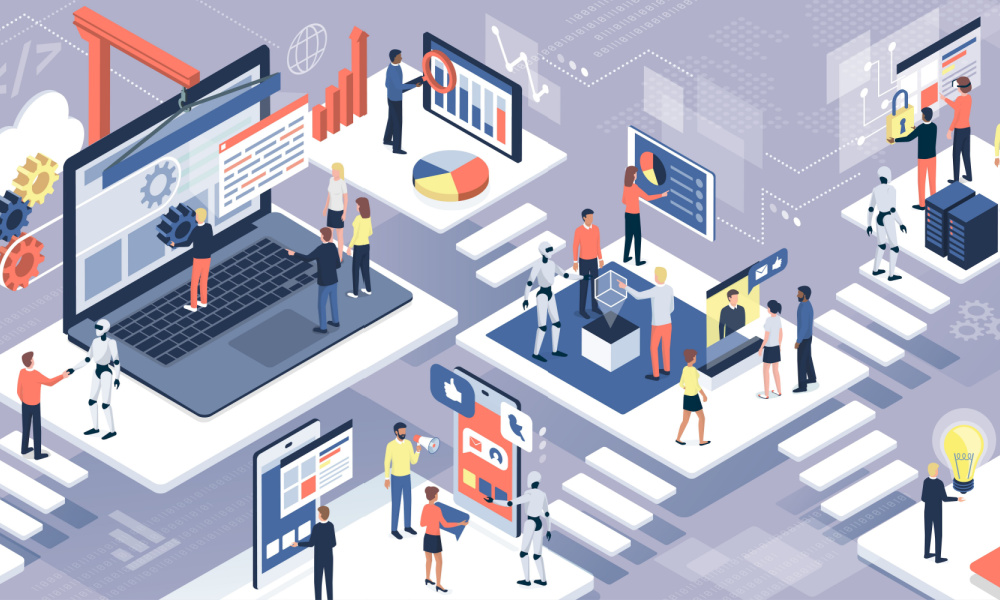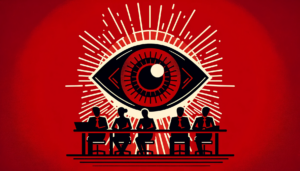Robust HR strategy: Resolving five future of work challenges
- 9 Min Read
With change comes opportunity. While these may be some of the most pressing challenges leaders are facing, there’s a real opportunity for companies to come together, collaborate and share learnings so they can figure out how to build the future of work.
- Author: Cate Luzio
- Date published: Mar 8, 2023
- Categories

When the economy faces uncertainty, employers must make tough decisions. HR and business leaders should proceed with caution as they collaborate to address these challenging moments. It’s easy to fall into a fear-based trap when finding efficiencies. Often, the most obvious cost-cutting measures that have an immediate impact on the bottom line can end up being too short-sighted, do not solve future of work challenges, and result in a net negative on the trajectory of the business.
Five future of work challenges
Here are five of the top challenges employers are facing today and how to solve them at an organizational level.
-
Engagement
Employees are less engaged than ever. A recent Gallup report showed that 85% of employees are either “unengaged” or “disengaged” at work. With budget cuts and workforce reductions, organizations are asking employees to take on more. This stretches them beyond their capacity which is leading to mental exhaustion. Simultaneously, many of the wellness, mental health, DEI, and professional development programs companies have been touting over the past few years have been first on the chopping block when budget cuts come around. These can be some of the core components that help boost morale and foster the overall employee experience. Taking them away while adding more to each employee’s workload is only going to further disengage and demoralize employees.
Even with shrinking budgets, there are still plenty of ways to make employees feel recognized and rewarded. It can be as simple as offering visibility by having a junior or mid-level staffer present at a leadership meeting. Recognize the individuals leading employee resource groups in a bigger way than just a pat on the back.
Perhaps there’s a C-level communication that can happen to demonstrate how critical the work they’re doing is to your organization. Do one professional development workshop a quarter if you can’t do them monthly anymore. Conduct an employee survey to see what your workforce is most excited about. You’re never going to be everything to everyone, but it’s crucial to find the employee insights that can help create engagement strategies and policies.
Indeed has a “Global You” day where everyone has to take the day off. Perhaps your employees are already thinking about Summer Fridays – simply starting to talk about the fact that it’s only a few months away can go a long way. A little goes a long way and these small cuts can make a big impact. Be strategic and informed about the choices you make.
-
Exclusion
It’s a widely known issue that some employees continue to feel excluded from opportunities and company culture. Managers need better resources to maintain visibility to who is doing what, who is in the pipeline, and whom to consider for certain opportunities. Inclusiveness is another thing that falls off the priority list when limited time and resources stretch managers too thin.
One of the most important things a manager can do is foster the growth and goals of employees, and it might take extra effort for managers to do so with employees who want to explore career trajectories that differ from their own. Even with the best of intentions, that affinity bias can find a way of creeping in. Are managers creating a culture where they hear all voices, or are they always putting the same names forward for opportunities? How are they evaluating people for bigger opportunities?
One opportunity is to manage up, down, and sideways. Managing up requires understanding what will help your leadership shine. It also creates visibility for you. Managing down is centered around building a high high-performing with the right values and organizational culture. Managing sideways or across is about building relationships with peers/stakeholders and establishing influence. It’s critical to learn the art of meeting people where they are and managing them appropriately. We need to give everyone, managers included, the chance to perform, excel, and succeed in meeting their goals.
-
Proximity bias in a remote workforce
Proximity bias is another bias that creeps into our hybrid work models. If some people are always in the office and others are not, there’s a good chance some employees feel left behind. While we no longer have to prove that we can get work done while maintaining flexibility, it’s becoming apparent that visibility may suffer. A solution to this could be standardizing your work schedules. Have everyone commit to one day in the office, assuming they’re all in the same location, and do your meetings on that day. If you have everyone overlap on the same day, it might level the playing field just a bit. If you can’t have everyone physically together, consider structuring meetings around purpose. Consider a meetings audit. You don’t need to remove all meetings. But an audit forces you to consider the purpose of every meeting on your calendar.
Another future of work issue that’s coming up is the idea of managers asking people to come into a physical office while they remain offsite. You need to model behaviors you want to inspire in your workforce.
While a distributed workforce isn’t new, the logistical challenges remain. Meanwhile, the most experienced among us have only three years of managing this evolved hybrid workforce, so let’s encourage companies to come together, share learnings, and figure out what best practices to implement as we build the workforce of the future.
-
ERG fatigue
ERGs (Employee Resource Groups) are a wonderful way to help employees feel more connected to each other. However, many who sign up to run or assist with ERGs still feel like it’s a volunteer job. It’s important to factor in how ERG participation is being recognized at performance reviews, and in compensation packages, when it’s time to have the raise conversations, and beyond.
The budgets for these initiatives were already small and as budgets are ever more scrutinized, they’re being cut even further. So once again, companies are asking employees to do more with less. If we want to encourage employees to engage, attend and participate in these ERGs, we need to set them up to succeed and factor it into their holistic work experience. Without guidance, resources, support, or recognition, we create a self-fulfilling prophecy and set them up to fail.
Leaders must demonstrate support for their ERGs. While budgets don’t always come from HR, they can be shared across various lines of business. Make sure those businesses don’t cut their contributions to your organization’s ERGs since it benefits all employees. Second, creating, and protecting, a centralized budget for ERG allocation is also an opportunity. This may also come from the same bucket as your funding for DEI initiatives. It’s also important to have someone with influence within the HR team support and attend ERG leadership meetings so participating employees have a friendly face in HR and a person to reach out to, not just an executive sponsor. Building in a sponsor from HR also prevents ERGs from becoming echo chambers. This goes back to visibility as well, which ladders up to overall engagement.
-
Turnover
From the “Great Resignation” to the recent mass layoffs and reorganizations, we’ve seen the toll turnover can take, not only on morale but on the bottom line. Employee Benefit News and the Work Institute’s Retention Report estimate that it costs 33% of a worker’s annual salary to replace them if they leave. Plus, with fresh faces, new people, and an onslaught of onboarding, company and team culture can take a hit.
HR and business leaders should partner on a comprehensive approach to fostering longevity within their organizations. HR has to be a real partner to the business, so employees don’t perceive it as simply a utility. And they need to understand business objectives and how to communicate both perspectives and where they tie in together. HR can and should absorb feedback from employees and then share that with business leaders to implement change. There’s a way to continue to have better employee experiences but still meet the objectives of the business. It can be a delicate balance, but it can be done. The future of work is up to us to create, and we need to collaborate across all stakeholders to make work, work for everyone.
Solving long-term future of work challenges requires knowledge transfer
With change comes opportunity. While these may be some of the most pressing challenges leaders are facing, there’s a real opportunity for companies to come together, collaborate and share learnings so they can figure out how to build the future of work. This knowledge transfer is critically important, but all these lessons aren’t all going to be applicable in the long term. We are in such a rapidly changing environment, and it can’t be one size fits all. While thinking about longer-term solutions, leaders may have to test and learn. Try different initiatives, practices, or policies and see what not only works but has an impact. Sometimes they won’t, but sometimes they will. Don’t be afraid to adapt or make changes. This will help inform where you go next and how HR can take the lead in crafting the future of work.
_______________
Cate Luzio is the Founder and CEO of Luminary. A long-time advocate for empowering women and girls, she served on the National Board for Girls Inc. from 2016-2022, is a mentor for WE.NYC and The NORTH, and sits on the Boards of Girls Inc. New York City and Pomp & Whimsy. Cate was one of Forbes’ Next 1000 Entrepreneurs in 2021 and a Top 100 Female Founder by Inc. in 2019 and 2021. She has been featured as an expert in top-tier financial, business, and lifestyle media. She is a sought-after keynote speaker for organizations such as Verizon, Hudson Bay Corporation, JPMorgan Chase, Fidelity, BlackRock, ADP, and UBS, as well as high-profile events including several Conferences for Women, ADP Women’s Summit, Verizon 100 Women Leaders, Fidelity Women Talk Money, Yelp Women in Business and Black in Business Summits.








